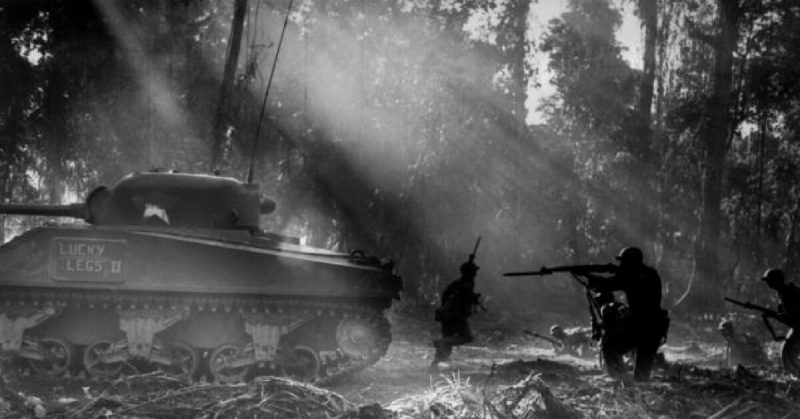Brawn is nothing without brains. When the two are put together, amazing things can happen, but when they come together in a Marine, the results can be deadly.
Tony Stein was born on September 30, 1921, in Dayton, Ohio – the “Gem City.” After graduating from Kiser High School, he worked as a machinist specializing in making tools; little knowing how well it would serve him later.
The son of Austrian Jewish immigrants, the outbreak of WWII was perhaps a more personal issue for him than it was for others. He enlisted in the US Marine Corps on September 22, 1942, but it was no ordinary Marine Corps he joined.
Stein was assigned to the Paramarines – an elite unit. He served with the Headquarters Company of the 3rd Parachute Battalion, 1st Parachute Regiment under the 3rd Marine Division.
He saw action in the Solomon Islands during the Land Battle of Vella Lavella from August 15 to October 9, 1943. A joint force of Americans and New Zealanders stormed the Japanese-held island and captured it.
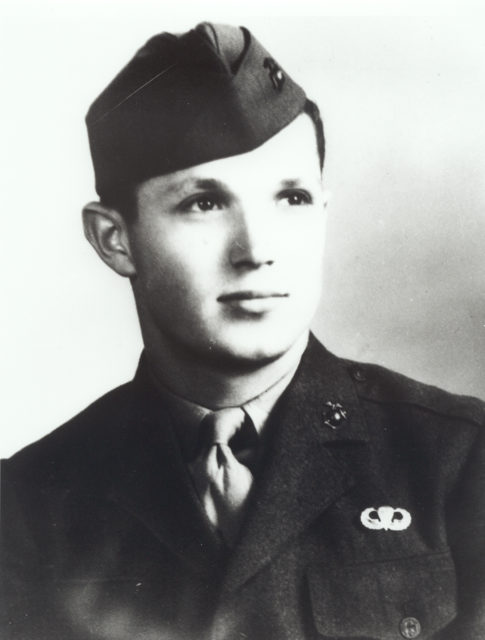
Two months later, Stein found himself in the Northern Solomons where he took part in the Bougainville Campaign. He was with the first American invasion on November 1 which took control of the beachhead at Torokina, driving the Japanese deeper into the interior.
The latter had taken the island in March 1942 and built several airbases. From these, they had been able to attack Allied shipping and communication lines between the US, Australia, and the Southwest Pacific Area. Although the American landings put a stop to that, the stranded Japanese refused to surrender.
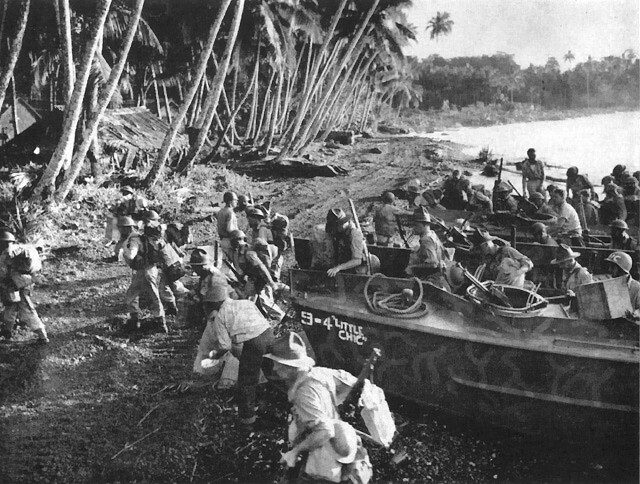
Resorting to guerilla tactics, they attacked the American bases and did whatever else they could to keep the newcomers on their toes. The latter retaliated by sending units into the jungle to hunt them down. During one of these trips, Stein is credited with having killed five snipers in a single day.
Perhaps that is what inspired him because shooting people one by one was hardly an efficient way to get rid of the Imperial Japanese Army.
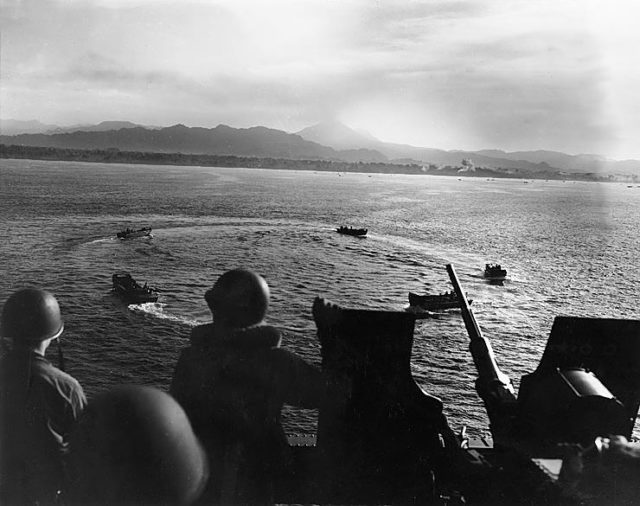
Stein came across a wrecked Navy fighter plane with its AN/M2 Aircraft machine gun still intact and had a eureka moment. Based on the 0.30 caliber M1919 Browning machine gun, the AN/M2 was lighter by around 30% – perfect for lugging around the jungle hunting down pesky enemies.
The AN/M2 had another advantage. The M1919 had a rate of fire of between 400 and 500 rounds per minute (doing so with a muzzle velocity of about 2,800 feet per second). The AN/M2’s rate of fire was almost triple; between 1,000 to 1,250 rounds per minute (rpm).
Stein had been a machinist. He took a stock from an M1 Garand 0.30 caliber semi-automatic rifle, a bipod from a BAR, a 100-round belted ammo carrier, and got to work.
Sadly, no one is sure what the result looked like exactly, but his superiors were impressed. They asked him to make five more, which were given to the 3rd Battalion, 28th Marines. Stein kept one, which he called “Stinger.”
A regular BAR’s rate of fire is about 600 rpm, and with a 20 round magazine, weighs some 24 pounds. Stinger, on the other hand, weighed 25 pounds and shot out a consistent 1,200 rpm with 100 belted rounds of 0.30-06. It was much more powerful than anything the Japanese had.
The Paramarines were disbanded, and his unit sent back to Camp Pendleton in California. Stein was made a corporal and became an assistant squad leader in Company A, 1st Battalion, 28th Marines with the new 5th Marine Division.
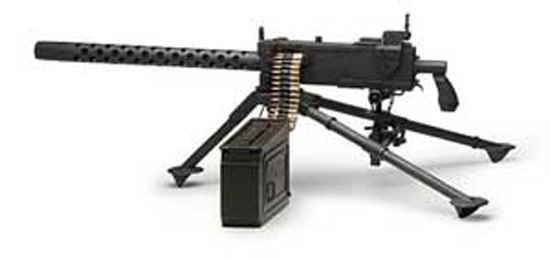
Then he was sent back to Asia in 1945. On February 19, he landed in Japan, marking the start of the Battle of Iwo Jima – what the military called Operation Detachment. The Japanese were waiting.
They were dug into heavily fortified bunkers, many connected by eleven miles of underground tunnels, and well-defended by hidden artillery positions. Mount Suribachi was also riddled with caves defended by desperate Japanese soldiers. Located near the landing sites, it had to be taken.
Enter Stein. As the 28th Marines moved off the beaches, the Stinger wreaked havoc on the Japanese pillboxes defending the coast – none of which were a match for the bullet-spewing monster Stein had patched together.
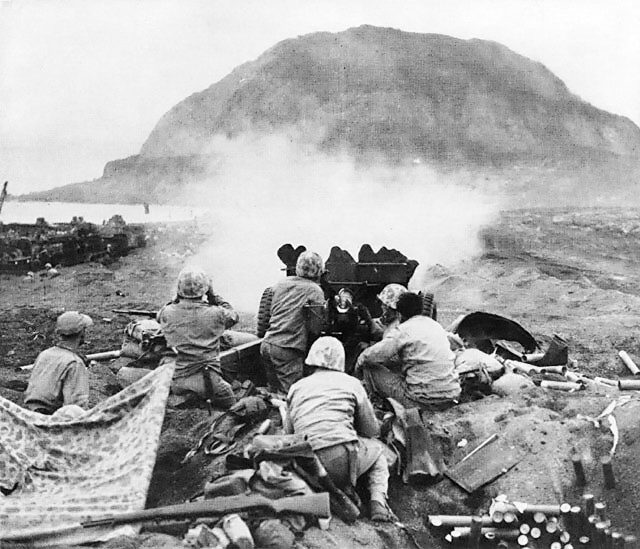
It did not take long for Stinger to run out of ammo, forcing Stein to run back to the beach to get more from the reserves. Each time he went back, he did so with a wounded soldier. In some cases, he carried them to the waiting medics. It took him eight round trips, in all.
On February 23, the 28th finally reached the mountain top. There were still some Japanese hiding in some of the surrounding caves, but most had run out of ammo. They were being picked off or were surrendering – either to the Americans or their own swords.
To commemorate their victory, Joe Rosenthal, a photographer for the Associated Press, took the famous picture of US soldiers raising the American flag. Not that Stein saw it – a bullet had caught up with him.
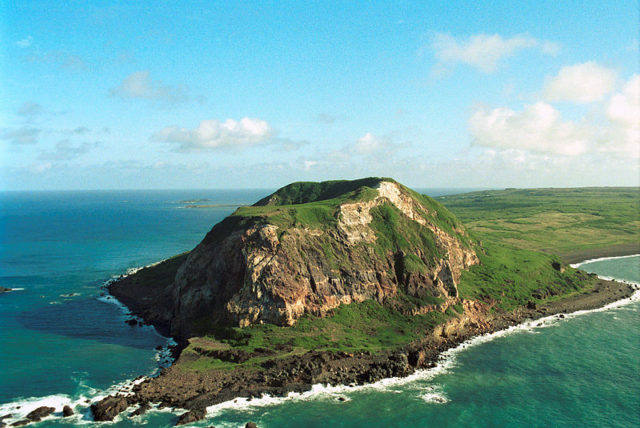
Fortunately, he survived and was sent to a hospital ship. Then he heard his regiment was taking heavy casualties further west of the island where they were attacking Hill 362A. On March 1, he rejoined his unit.
That same day, he was leading 19 men on a rescue mission. Company A was being pinned down by a machine gun nest, and Stein’s group were trying to destroy it when a sniper’s bullet found him.
His widow received his Medal of Honor on February 19, 1946.
